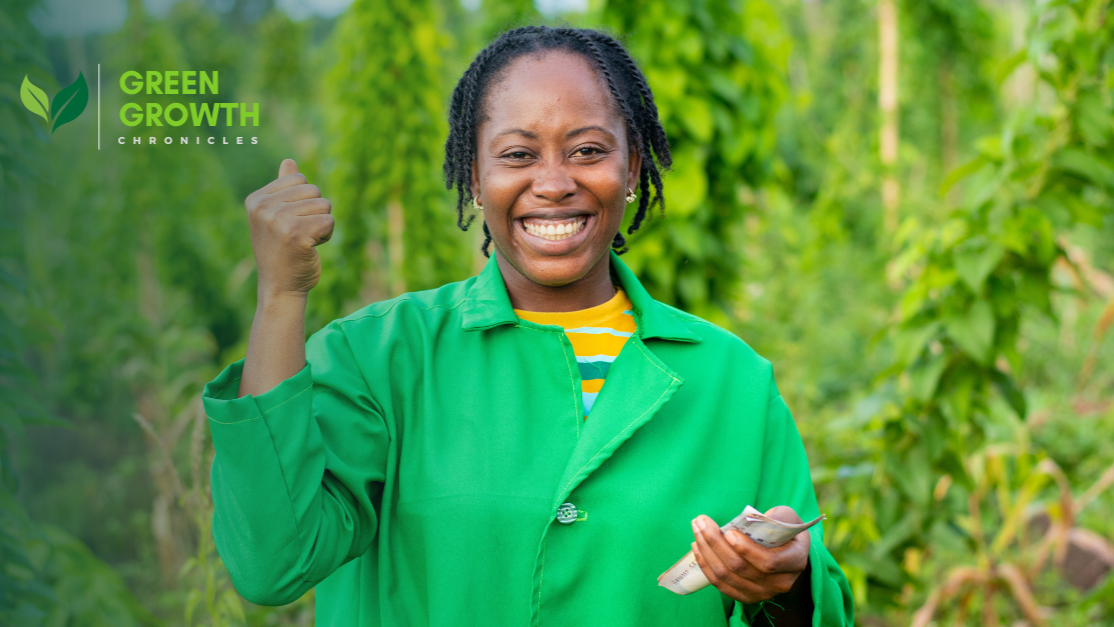Starting a business as a woman is tough; starting a green business as a woman is even tougher.
Imagine being a woman entrepreneur with a groundbreaking idea, one that could reduce carbon emissions, transform waste into reusable materials, or bring clean energy to underserved communities. You have done the research, built the business model, and proven that your solution works. But when it is time to secure funding, doors keep closing. Investors praise your passion but hesitate to commit. They go “We love your idea, but it is not the right fit for us.”
The truth, it is not the lack of expertise or effort that has held women back, but it is the fact that the system was not built with women-led, sustainability-driven businesses in mind.
The reality?
There’s a finance gap for women-led businesses, according to the International Finance Corporation (IFC), women entrepreneurs face a $1.7 trillion financing deficit globally. At the same time an even bigger one for those leading in sustainability, BloombergNEF estimates that sustainable finance needs to reach $7 trillion annually to meet global climate goals, yet many climate solutions, particularly those led by women, remain underfunded.
Women entrepreneurs are driving innovation in the green economy, yet they face disproportionate barriers to accessing capital. From venture funding to bank loans, the financial landscape remains skewed in favor of male-led enterprises, leaving many women with brilliant, impact-driven ideas struggling to secure the resources they need to scale. Without adequate financing, their impact remains limited , preventing them from scaling to their full potential.
Bridging these gaps and investing in women-led green enterprises is not just about fairness, it is about opening untapped potential for climate resilience, economic growth, and sustainable innovation. If more women-led green business get access to finance, this can lead the way to a net-zero future for people and the planet.
Why Is Funding for Women-Led Green Businesses So Hard to Access?
- Bias in Investment Decisions: Studies show that women-led businesses receive only a fraction of global venture capital funding. When sustainability is added to the mix, investors often perceive these businesses as “too risky” or “too niche.”
- Lack of Gender-Lens Investing: While impact investing is growing, many funds still don’t prioritize gender-inclusive financing models.
- Limited Access to Networks: Women often struggle to access the same financial and mentorship networks that help male-led businesses secure capital.
Women-Led Green Businesses Driving Sustainability
Women entrepreneurs are leading climate-smart businesses worldwide, proving that investing in them leads to both economic and environmental benefits.
Nzambi Matee (Gjenge Makers, Kenya)

Frustrated by the plastic waste crisis in Nairobi, Nzambi developed a way to turn plastic waste into durable, low-cost bricks used for paving. Her company, Gjenge Makers, Gjenge pledges to uphold sustainable business practices while remaining faithful to its vision and goal. They have repurposed 200,000 Kgs of plastic garbage so far. By converting plastic waste into a readily available source of attractive building materials, they have also been able to create 600 jobs for women, youth organizations, and garbage collectors.
Ellen MacArthur (Ellen MacArthur Foundation, UK)

Ellen is a former record-breaking sailor, founded the Ellen MacArthur Foundation to accelerate the transition to a circular economy, promoting sustainability through closed-loop systems and waste reduction. The non-profit organisation creates evidence-based original research on the benefits of a circular economy, and how it can contribute to solving global challenges like climate change and biodiversity loss.
Anushka Ratnayake (myAgro, West Africa)

Anushka is the CEO and Founder of myAgro, an organization that helps small-scale women farmers access microfinance and agricultural resources. After spending years living and working closely with smallholder farmers, she strongly believes in solutions that support greater autonomy and agency. MyAgro enables women to buy seeds and fertilizer in small increments using digital financial tools, significantly increasing food security and economic stability. Since its inception, myAgro has helped thousands of female farmers improve their yields and financial independence.
To close the finance gap and empower more women-led green enterprises, targeted actions are needed:
Increase Access to Green Financing for Women Entrepreneurs:
– Expand climate funds that specifically target women-led businesses.
– Provide accessible microfinance and low-interest green loans.
Tools: Green Climate Fund (GCF), Women’s Livelihood Bond
Strengthen Investment in Women-Led Sustainability Ventures
– Encourage venture capital firms to support female founders in green industries.
– Develop gender-focused impact investment funds.
Key resources:Venture Capital for Her, SheEO Foundation
Enhance Capacity Building and Financial Literacy
– Train women entrepreneurs in sustainable business models and financial management.
– Provide mentorship programs linking female founders with investors.
Key programs: Women4Climate, Barefoot College Solar Training, AGRA (VALUE4HER)
Closing the financing gap for women-led green enterprises is essential for a sustainable future. Here are ways on how you can take action, no matter where you are in your career or life:
If you are an investor or decision-maker: Prioritize funding women-led businesses and incorporate a gender-lens approach in investment strategies. Seek out green enterprises that are driving real impact.
If you are a business leader or entrepreneur: Support and mentor women in the sustainability space. Share funding opportunities and collaborate with female-led businesses.
If you are an advocate: Vote with your wallet. Support women-led sustainable brands, spread the word about their work, and advocate for policies that promote financial inclusivity.
If you are just learning about this for the first time: Repost, share, and spark conversations. Awareness is the first step toward action. The more people understand the challenges women-led green enterprises face, the more momentum we build toward systemic change.
The truth is, green economycan not thrive if women are left behind. When we finance women-led sustainability ventures, we are not just closing the gender gap, we are accelerating solutions that will benefit everyone.
The question is: “What step will you take today to close the gap and invest in women-led green enterprises?”
Let’s continue advocating for equitable, sustainable solutions that empower all.
Until next time,


